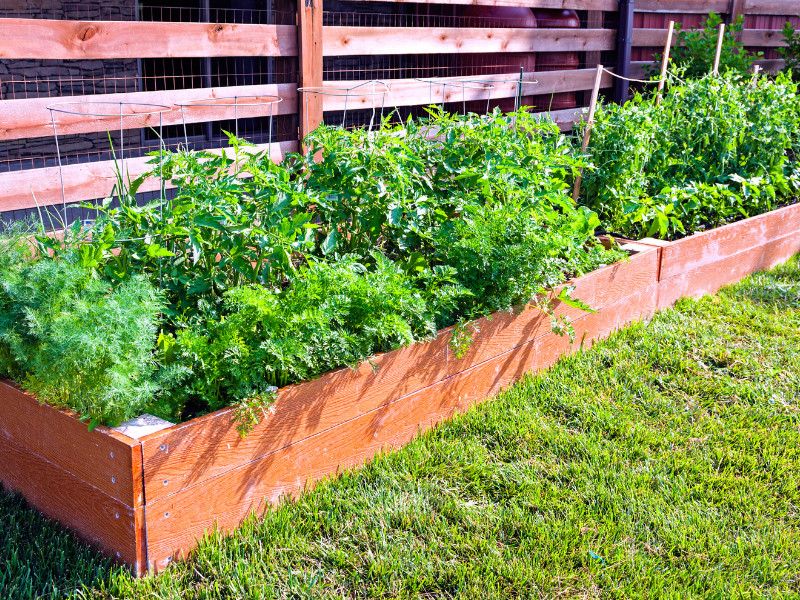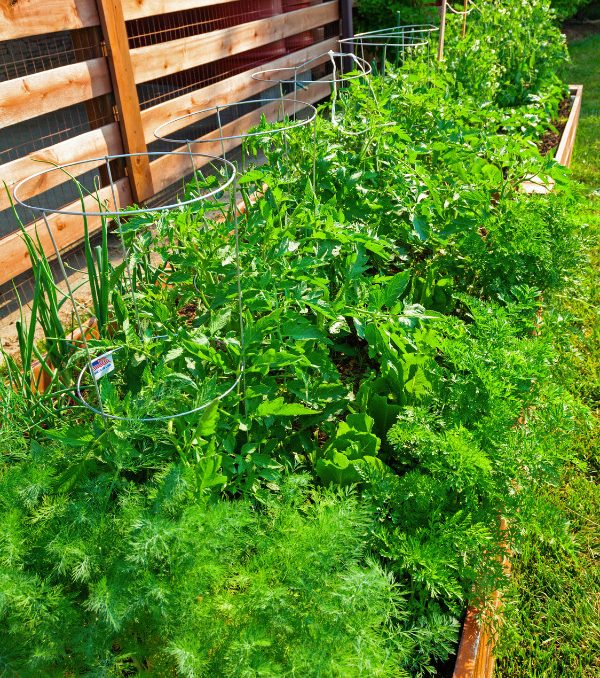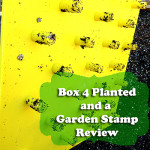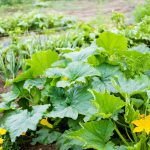Are you wondering why you need a survival garden? Storing canned foods and other non-perishable items for emergencies is something that I personally believe every home should currently be doing.
If an actual emergency were ever to occur, it wouldn’t be too long before your supply would eventually run out. Without any more food to feed your family, what would you do?

That’s why a long-term solution, like having your own survival garden already established would be a wise decision on your part. Please keep reading to discover my ultimate guide to growing survival garden plants. Make sure you check out what a victory garden is!
What is a Survival Garden?
A survival garden is simply a garden that’s specifically designed to grow food that can be stored for long periods of time. Why You Need to Stockpile Garden Seeds Now
This could include things like root vegetables, leafy greens, and fruits that can be dried or canned. Essentially, anything that can be stored and used as a food source in an emergency situation.
Benefits of a Survival Garden
Not only will a survival garden help you become more self-reliant and better prepared for emergencies, but it’s also a great way to get some exercise and fresh air.
And if you happen to have kids, it’s a perfect opportunity to teach them about where food comes from and how it’s grown. Not to mention, having your own survival garden can also save you a ton of money in the long run. Who could say no to that?
Now is the Time to Get Started!
Don’t assume that you can wait until after an emergency has taken place to start plopping seeds in the ground. It will be too late by then! Calorie-dense crops like potatoes, winter squash, and sweet potatoes take all season to grow, which certainly isn’t going to help you when time is no longer on your side.
I strongly encourage you to start your survival garden as soon as you can, that way you’ll get most of your gardening mistakes out of the way beforehand. (And yes, they will happen.) You can purchase survival garden seeds online!

What Makes a Good Survival Garden Crop?
There are a number of different things to consider when starting out growing your own survival garden. But don’t start feeling overwhelmed because I’ve got you covered! These are a few important ones to think about.
Easy to Grow
Dealing with tricky crops is not something else you need to add to your worry list after a SHTF scenario has taken place. That’s why I’d encourage you to mainly focus on the crops that are easier to manage and won’t tire you out. Lucrative, yet low-maintenance crops like tomatoes, beans, and peas are all great examples of what I’m talking about.
Thrives in a Wide Range of Climates
Different crops will obviously do better in different climates. But if you’re trying to grow a survival garden that can provide food no matter where you live, then you’ll need to make sure you choose plants that can adapt to a variety of climate conditions. Crops like cabbage, kale, and carrots are all good options here.
Easy to Harvest
Harvesting can not only be a lot of work but some crops have very small windows on when they need to be harvested. All your time and energy up until that point could be wasted if you’re just a couple of days late. So try and grow survival crops that aren’t too laborsome and are more forgiving when you harvest them.
Long shelf life
Following a disaster, you’re not going to want to be stuck with a bunch of perishable items that will go bad after just a few days. That’s why it’s important to choose plants with a longer shelf life, like root vegetables and leafy greens. These can easily be stored in a cool, dark place and will last for several weeks or even months. A root cellar or a basement would be an ideal storage place for your crops.
Pest & Disease Resistant
Pests and diseases can wreak havoc on your crops, which is the last thing you need during a survival situation. To avoid this as much as possible, it’s best to stick with plants that are naturally resistant to these things. Crops like tomatoes, peppers, and squash are all good examples.
I do want to warn you, that if you’re seriously considering growing corn for survival purposes, keep in mind that raccoons will take every opportunity that they can get to pounce on your crops once they begin to ripen.
Choosing the Right Plants for Your Survival Garden
As I briefly mentioned earlier, when it comes to choosing plants for your survival garden, you’ll want to pick ones that are relatively easy to grow and don’t require a lot of maintenance.
Also, choosing crops that come to harvest quickly is something else that you should consider. After all, you likely won’t have a lot of time or resources to spare if an emergency were to occur. With that being said, here are some of the best plants to grow in a survival garden:
- Potatoes
- Beans
- Peas
- Cabbage
- Broccoli
- Brussels sprouts
- Kale
- Swiss chard
- Spinach
- Radishes
- Turnips
- Beets
- Tomatoes
- Peppers
- Eggplant
- Cucumbers
- Squash
- Pumpkins
- Watermelons
- Cantaloupe and Other Melons
Don’t Forget about Herbs
Herbs are also a great addition to any survival garden. Not only do they add flavor to your food, but some of them also have medicinal properties that can come in handy if you or someone else in your group happen to get sick. Here are a few herbs that you should consider adding to your garden:
Tips For Your Garden Soil
Assuming that you already have a plot of land picked out for your garden, the next thing you’ll need to do is prepare the soil. This step is critical for the success of your crops and shouldn’t be skipped over.
- The best way to prepare your soil is to use a method called double digging. This is where you’ll dig a trench that’s about two feet deep and then mix in some compost or manure to help improve the quality of the soil. Once you’ve done that, you’ll need to fill the trench back in and then dig another one right next to it.
- After you’ve prepared your soil, you can start planting your seeds or seedlings. If you’re starting with seeds, you’ll want to plant them in rows so that they have plenty of room to grow. Once they’ve sprouted and are a few inches tall, you can thin them out so that only the strongest plants remain.
Awesome Soil Amendments for Your Organic Vegetable Garden
The Best DIY Soil Mix Recipe
How to Improve Soil Without a Compost Pile
Watering Tips
As for watering, how often you’ll need to do it will depend on the type of plants that you’re growing and the climate that you live in. In general, most plants will need to be watered about once a week. However, during periods of extreme heat, you may need to water them more often.
9 Ways to Conserve Water in Your Vegetable Garden
Once your plants have grown and are ready to harvest, you can either eat them yourself or preserve them for later use. Canning and dehydrating are two of the best ways to do this.
More Gardening Tips
- Easy to Grow Vegetables
- 14 Vegetables You Can Grow Indoors in the Fall and Winter
- How to Garden During a Drought
- Which Gardening Method is Best?
- How to Hide Your Survival Garden
I hope you enjoyed reading my ultimate guide to growing survival plants. To all my gardener readers, what are some other tips that you’ve discovered about survival gardening that you’d be willing to share? I look forward to hearing from you!



